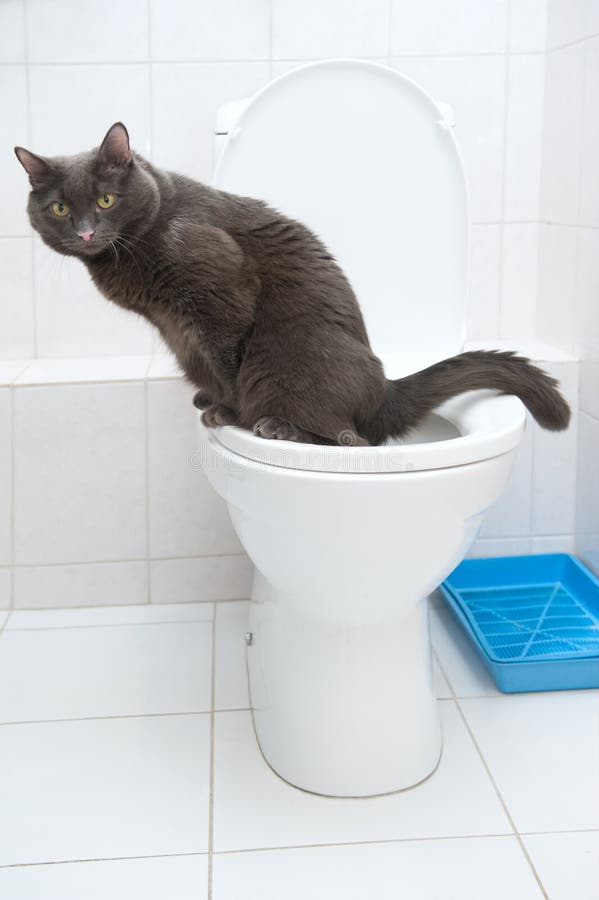Avoid Clogs and Damage: Never Flush Cat Poop Down Your Toilet - Professional Insights
Avoid Clogs and Damage: Never Flush Cat Poop Down Your Toilet - Professional Insights
Blog Article
We have discovered this great article about Don’t flush cat feces down the toilet directly below on the web and thought it made perfect sense to write about it with you over here.

Intro
As pet cat owners, it's vital to be mindful of exactly how we get rid of our feline buddies' waste. While it may seem hassle-free to purge feline poop down the toilet, this practice can have harmful effects for both the setting and human health and wellness.
Alternatives to Flushing
Luckily, there are much safer and a lot more accountable means to dispose of feline poop. Consider the complying with choices:
1. Scoop and Dispose in Trash
The most usual approach of throwing away feline poop is to scoop it into a naturally degradable bag and throw it in the trash. Be sure to make use of a devoted clutter inside story and deal with the waste promptly.
2. Usage Biodegradable Litter
Go with naturally degradable cat clutter made from materials such as corn or wheat. These litters are eco-friendly and can be securely dealt with in the trash.
3. Hide in the Yard
If you have a lawn, consider hiding pet cat waste in a marked location far from veggie gardens and water sources. Make sure to dig deep enough to avoid contamination of groundwater.
4. Set Up a Pet Waste Disposal System
Invest in an animal garbage disposal system particularly created for pet cat waste. These systems make use of enzymes to break down the waste, decreasing odor and ecological influence.
Health Risks
In addition to ecological issues, flushing feline waste can additionally posture health and wellness threats to humans. Feline feces may contain Toxoplasma gondii, a parasite that can trigger toxoplasmosis-- a potentially serious illness, particularly for expectant ladies and people with weakened body immune systems.
Ecological Impact
Purging feline poop introduces hazardous microorganisms and bloodsuckers into the supply of water, posing a considerable danger to water environments. These pollutants can negatively affect marine life and compromise water top quality.
Final thought
Accountable pet dog ownership prolongs past providing food and shelter-- it also involves correct waste monitoring. By avoiding flushing feline poop down the bathroom and choosing alternative disposal approaches, we can reduce our ecological impact and safeguard human wellness.
Why Can’t I Flush Cat Poop?
It Spreads a Parasite
Cats are frequently infected with a parasite called toxoplasma gondii. The parasite causes an infection called toxoplasmosis. It is usually harmless to cats. The parasite only uses cat poop as a host for its eggs. Otherwise, the cat’s immune system usually keeps the infection at low enough levels to maintain its own health. But it does not stop the develop of eggs. These eggs are tiny and surprisingly tough. They may survive for a year before they begin to grow. But that’s the problem.
Our wastewater system is not designed to deal with toxoplasmosis eggs. Instead, most eggs will flush from your toilet into sewers and wastewater management plants. After the sewage is treated for many other harmful things in it, it is typically released into local rivers, lakes, or oceans. Here, the toxoplasmosis eggs can find new hosts, including starfish, crabs, otters, and many other wildlife. For many, this is a significant risk to their health. Toxoplasmosis can also end up infecting water sources that are important for agriculture, which means our deer, pigs, and sheep can get infected too.
Is There Risk to Humans?
There can be a risk to human life from flushing cat poop down the toilet. If you do so, the parasites from your cat’s poop can end up in shellfish, game animals, or livestock. If this meat is then served raw or undercooked, the people who eat it can get sick.
In fact, according to the CDC, 40 million people in the United States are infected with toxoplasma gondii. They get it from exposure to infected seafood, or from some kind of cat poop contamination, like drinking from a stream that is contaminated or touching anything that has come into contact with cat poop. That includes just cleaning a cat litter box.
Most people who get infected with these parasites will not develop any symptoms. However, for pregnant women or for those with compromised immune systems, the parasite can cause severe health problems.
How to Handle Cat Poop
The best way to handle cat poop is actually to clean the box more often. The eggs that the parasite sheds will not become active until one to five days after the cat poops. That means that if you clean daily, you’re much less likely to come into direct contact with infectious eggs.
That said, always dispose of cat poop in the garbage and not down the toilet. Wash your hands before and after you clean the litter box, and bring the bag of poop right outside to your garbage bins.
https://trenchlesssolutionsusa.com/why-cant-i-flush-cat-poop/

As a devoted person who reads on Can You Flush Cat Poo or Litter Down the Toilet?, I think sharing that post was a good idea. Sharing is caring. Helping others is fun. I praise you for your time. Kindly pay a visit to our site back soon.
Quote & Schedule Report this page